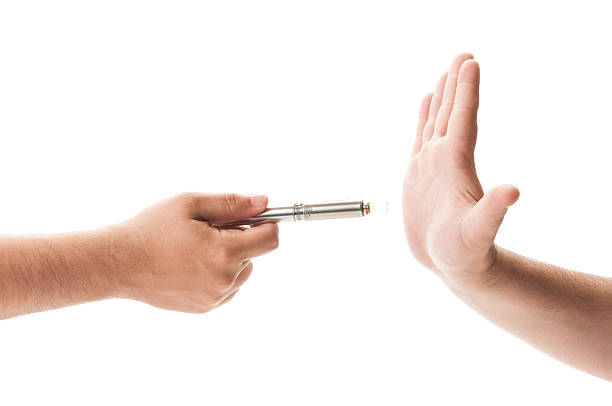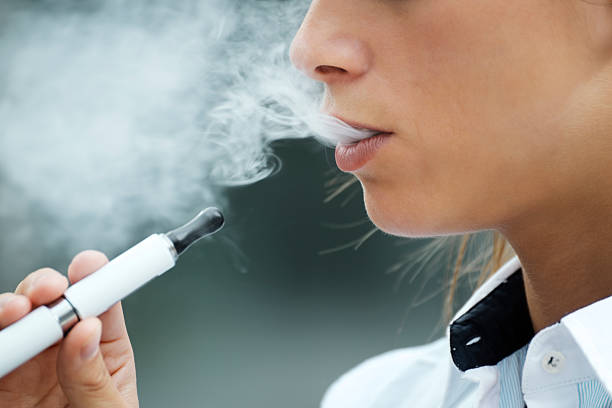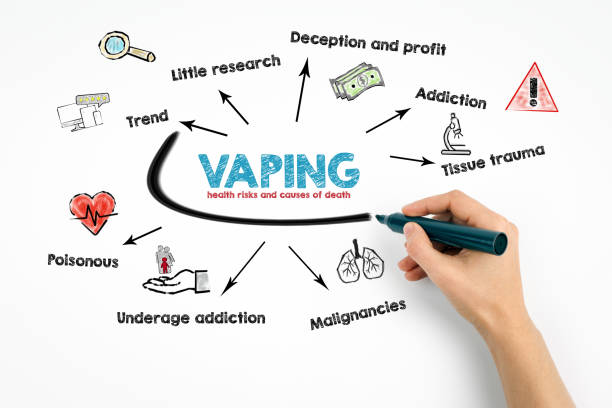HOW TO QUIT VAPING?

Quitting vaping can be difficult for those addicted to nicotine—setting a date to stop vaping and contacting friends and family for support. Nicotine replacement therapy (NRT) products such as nicotine patches, gum, or nicotine-free alternatives can help deal with withdrawals. Physical activity can also aid in reducing the urge to vape and promoting general health. Research shows that vaping nicotine is just as harmful as traditional tobacco products, and it is crucial to prioritize long-term health when trying to quit. While some may attempt to quit cold turkey, this method may not work for everyone. Therefore, exploring alternative methods, such as laser therapy, is essential to effectively reduce cravings and withdrawal symptoms in individuals trying to quit vaping.
What is Laser Therapy?
Low-level laser therapy is an alternative treatment commonly referred to as laser therapy. (LLLT), is a non-invasive treatment that uses light energy to promote healing in the body. Laser therapy works by stimulating the cells in the body, enabling the production of ATP, which helps to speed up the healing process. Laser therapy has been used to treat various conditions, including chronic pain, inflammation, and musculoskeletal injuries.

How Does Laser Therapy Work for Quitting Vaping?
Targeting specific acupoints on the body linked to addiction is the working principle of laser therapy. By doing so, cravings and withdrawal symptoms can be reduced, which helps vapers in their quest to quit. Laser therapy can also enhance the production of endorphins, natural painkillers created by the body. Endorphins can help individuals better handle the challenges of quitting vaping by reducing stress and anxiety.
What Happens During a Laser Therapy Session?
During a laser therapy session, a trained technician will apply a low-level laser to specific acupoints on the body. The laser is painless and does not produce heat, making it a safe and non-invasive treatment. The technician will typically target acupoints on the ears, face, and hands, as these areas are associated with addiction. Depending on the individual’s needs, the session will typically last between 20 and 30 minutes.
What are the Benefits of Laser Therapy for Quitting Vaping?
Laser therapy has several benefits for individuals looking to quit vaping. First, laser therapy is a safe and non-invasive treatment that does not produce any side effects. Furthermore, laser therapy can aid in lessening the severity of cravings and withdrawal symptoms, ultimately simplifying the process of vaping cessation for individuals. Finally, laser therapy can also help reduce stress and anxiety, common triggers for vaping. By reducing stress and anxiety, laser therapy can help individuals to cope with the challenges of quitting vaping.
What are the Risks of Laser Therapy for Quitting Vaping?
Laser therapy is a safe and non-invasive treatment that does not produce any side effects. However, individuals with certain medical conditions may not be suitable for laser therapy. It is essential to consult with a laser therapist before laser therapy to ensure it is safe for you.
How Effective is Laser Therapy for Quitting Vaping?
The effectiveness of laser therapy for quitting vaping may vary from person to person. However, several studies have shown that laser therapy can effectively treat nicotine addiction. For example, one study published in the Journal of Chinese Medicine found that laser therapy effectively reduced cravings and withdrawal symptoms in individuals trying to quit smoking. In addition, a study in the Journal of Alternative and Complementary Medicine reported that laser therapy efficiently decreased nicotine cravings in people attempting to quit smoking.
What are the Side Effects of Laser Therapy for Quitting Vaping?
Laser therapy is a safe and non-invasive treatment that does not produce any side effects. However, some individuals may experience mild discomfort during the session. This discomfort is typically mild and does not last long.
What is the duration of laser therapy for vaping cessation?
The duration required to notice results from laser therapy for vaping cessation may differ for each individual. While some people may experience immediate improvements, others may take longer to see a noticeable difference.

What are the benefits of quitting smoking? Once you’ve quit smoking, there are immediate health benefits you will experience:
Note: Individual results may vary.
Book to Quit Vaping Today
Q & A
Quitting vaping is important because it can have several health benefits, including improved lung function, reduced risk of respiratory diseases, and better overall health.
Your blood pressure and pulse return to normal.
Some common methods for quitting vaping include laser therapy, nicotine replacement therapy (NRT), behavioural therapy, support groups, and counselling.
Yes, it is possible to quit vaping cold turkey. This method may not be effective for everyone and can be challenging. We recommend getting an aid like laser therapy to help you quit.
Nicotine replacement therapy (NRT) is a method of quitting vaping that involves using products such as nicotine gum or patches to reduce nicotine cravings gradually.
Individuals seeking to quit vaping can benefit from behavioral therapy, a form of counseling that concentrates on altering behaviors that promote addiction.
Support groups come together to support and encourage each other as they try to quit vaping.
You can cope with nicotine cravings using distraction techniques, such as exercise or meditation, nicotine replacement therapy products, or using laser therapy.
Common withdrawal symptoms when quitting vaping include irritability, anxiety, insomnia, headaches, and fatigue.
The duration of quitting vaping varies for each individual. However, it typically takes several weeks to several months to quit vaping successfully.
